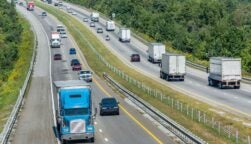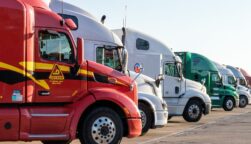Kodiak Robotics, a leading autonomous vehicle company, and Vay, a provider of remote-driving technology, announced a continuing partnership on Wednesday. Vay is currently providing its technology to help power Kodiak’s Assisted Autonomy technology, an element of Kodiak’s autonomous driving solution.
At the moment, Kodiak employees are utilizing Vay technology in certain low-speed environments. The Kodiak technology remains fully in control and sets limits on what the human can do.
The partnership appears to be a promising one, particularly as self-driving trucks continue to roll out in different states across the country. However, it is uncertain whether the technology will be effective in solving many of the industry’s ongoing problems.
Vay Technology Helping Kodiak’s Assisted Autonomy Technology
Kodiak Robotics has been integrating Vay technology within its self-driving trucks, according to a partnership that was announced on Wednesday. Kodiak uses Vay’s remote-driving technology in its ‘Assisted Autonomy’ technology, which allows a human to remotely control a truck in “low-speed, clearly-defined scenarios.” Assisted Autonomy is part of Kodiak’s autonomous driving solution, the Kodiak Driver.
The companies have been working together since last year, when Kodiak’s self-driving trucks started to make driverless deliveries for Atlas Energy Solutions in the Permian Basin of West Texas and Eastern New Mexico.
 This just in! View
This just in! View
the top business tech deals for 2025 👨💻
Kodiak initially began experimenting with remote-driving technology as part of a contract with the US Army in 2022, which needed a system that enabled remote operation in certain scenarios. Since then, the company has developed self-driving trucks and Assisted Autonomy.
“Assisted Autonomy is a hybrid approach that blends remote support with onboard autonomy to create a solution that enables flexibility and safety. Assisted Autonomy, therefore, combines the value of human decision-making with the rigorous safety controls of the autonomous system.” – Kodiak press release
Kodiak Employees Using Technology in Low-Speed Scenarios
While the combination of both technologies allows a human to remotely control a Kodiak self-driving truck, Assisted Autonomy remains active and is able to set limits on what the remote human can do. At the moment, the technology is being used in low-speed scenarios. Kodiak has also assured that all employees have commercial driving licenses and undergo rigorous training as part of using the trucks.
Ordinarily, remote-driving technology is used to support sidewalk delivery robots or self-driving forklifts. Recently, it’s being deployed by robotaxi companies. Vay has made this technology a strong element of its car-sharing business. The startup, originating from Berlin, operates as a driverless car-sharing company that uses its tech to allow employees to coordinate vehicles to customers.
Customers take manual control of the car, drive themselves to their destination, and then the employee pilots the vehicle back when the customer is finished. Vay has recorded more than 10,000 commercial trips.
Kodiak to Begin Commercial Driverless Deliveries in 2026
Kodiak plans to begin commercial driverless deliveries on public highways in Texas, during the second half of 2026, and this continuing partnership with Vay seems like a sure way of getting there. The revelation of self-driving trucks and remote-driving technology could prove to be a big one within the logistics industry. It could even help with the ongoing trucker shortage.
In fact, a recent Tech.co survey found that 65% of freight professionals expect self-driving trucks to be on the road in the US by 2050. Some even countered this figure, and said the technology could be seen as early as 15 years from now.
However, there are still be some reservations surrounding self-driving trucks. Significantly, despite positive signs, only a fifth of professionals said they would pick a self-driving truck rather than recruit a new driver.




